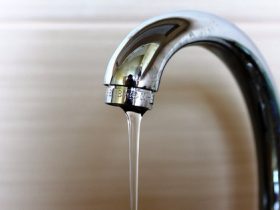Listed here down the page you will discover more brilliant ideas regarding 4 Ways to Troubleshoot Low Water Pressure.

Low tide pressure in your home can be an irritating problem, affecting whatever from bathing to washing recipes. If you're experiencing weak water flow, there are a number of feasible reasons and solutions to check out. In this guide, we'll review usual reasons for low tide pressure and useful actions to resolve the problem properly.
Intro to Low Water Stress
Low tide stress takes place when the circulation of water from your taps, showers, and various other components is weaker than typical. This can make daily jobs more difficult and much less reliable. Understanding the sources of low tide stress is crucial to finding the ideal option.
Typical Root Causes Of Low Tide Pressure
Pipe Obstructions
Gradually, pipes can end up being blocked with mineral deposits, debris, or debris, limiting the flow of water. This is a typical concern in older homes with galvanized steel pipes.
Corrosion
Deterioration within pipes can lead to leaks and reduced water stress. Rust buildup can restrict water flow, particularly in maturing plumbing systems.
Faulty Pressure Regulators
Stress regulatory authorities are in charge of preserving constant water stress in your home. If they malfunction, it can cause low water pressure or irregular circulation throughout the house.
Metropolitan Water Issues
Occasionally, the problem exists outside your home. Local water concerns, such as main line leakages or maintenance work, can temporarily lower water stress in your location.
Just How to Diagnose Low Water Pressure
Inspecting Taps and Components
Beginning by examining the water pressure at different taps and components throughout your home. If the issue is separated to certain areas, it might indicate localized troubles.
Evaluating Pipelines
Evaluate visible pipes for indications of leakages, corrosion, or obstructions. Take notice of any type of unusual sounds, such as knocking or rattling pipelines, which can indicate issues within the plumbing system.
Consulting with a Plumber
If you're unable to pinpoint the reason for low water stress, consider working with an expert plumber to carry out a complete examination. They can identify underlying concerns and recommend ideal remedies.
DIY Solutions to Fix Low Water Stress
Cleaning Aerators and Showerheads
Mineral deposits can gather in aerators and showerheads, decreasing water flow. Eliminate and clean these parts consistently to improve water stress.
Flushing Water Heater
Debris build-up in the water heater can limit flow and minimize performance. Purging the container periodically helps get rid of sediment and keep ideal efficiency.
Checking Stress Regulatory Authority
Make sure that the stress regulator is functioning correctly. Adjusting or changing the regulatory authority can aid bring back proper water pressure throughout your home.
Cleaning Clogs in Piping
For small blockages, try making use of a plumbing serpent or chemical drainpipe cleaner to clear blockages in pipelines. Beware when using chemicals and adhere to safety and security guidelines.
When to Call an Expert Plumber
If do it yourself efforts stop working to fix the issue or if you believe considerable plumbing troubles, it's best to seek assistance from an accredited plumber. They have the proficiency and tools to resolve intricate issues safely and properly.
Preventive Measures to Maintain Water Stress
Routine Maintenance
Schedule regular upkeep for your plumbing system to prevent issues such as rust, leaks, and blockages. Dealing with minor troubles early can assist stay clear of even more considerable repair services in the future.
Mounting a Pressure Booster
Consider setting up a stress booster pump to boost water stress in areas with constantly reduced circulation. This can be especially helpful for multi-story homes or residential properties with high-demand fixtures.
Monitoring Water Usage
Bear in mind water usage practices and stay clear of ill-using the plumbing system. Basic adjustments, such as staggering showers and laundry loads, can assist keep ample water stress.
Verdict
Dealing with low tide stress can be irritating, however identifying the underlying causes and implementing ideal solutions can bring back ideal flow throughout your home. Whether it's cleaning aerators, examining pipes, or talking to a plumber, taking proactive steps can ensure a steady supply of water for your everyday requirements.
FOUR WAYS TO FIX LOW WATER PRESSURE NOW
Turning on a shower or faucet only to find the water comes out in a sad, slow drizzle is never a good feeling. How exactly are you supposed to wash a pan or take a quick shower when it takes 10 minutes just to rinse off a little soap? The good news is that when your water pressure is bad, there's always a cause: typically one that can be easily fixed. Here are some of the most common causes of low pressure and what you can do to fix the issue:
DEBRIS AND MINERAL DEPOSIT BUILDUPS
If you notice low water pressure from just one or two of the fixtures in your house, the problem likely has to do with debris buildup. Water is full of minerals and other debris, all of which can accumulate in your pipes and on your fixtures. This can cause a blockage that affects how much water flows through. To fix this, try filling a small plastic bag with white vinegar, and use a rubber band to hang it around your showerhead or faucet. Let the head of the fixture soak for a few hours, and the vinegar should loosen the deposits.
WATER LEAKS
Leaks are another common cause of low water pressure. If water is flowing out of your plumbing through a hole or crack before it can reach your fixture, the pressure coming out of the faucet or showerhead will be lower. A plumbing professional is your best bet for finding and repairing a leak in your water supply pipes.
Leaks are another common cause of low water pressure. If water is flowing out of your plumbing through a hole or crack before it can reach your fixture, the pressure coming out of the faucet or showerhead will be lower. A plumbing professional is your best bet for finding and repairing a leak in your water supply pipes.
A VALVE ISSUE
If you have low water pressure throughout your home, check your main shut-off valve to make sure it's completely open. You may also want to see if there's a pressure-reducing valve installed. If there is, have a plumber help you adjust the settings to get the pressure you're looking for.
OTHERS USING WATER
Believe it or not, your low water pressure could be caused by your neighbors. If you notice low pressure at certain times of day, it may be because you and the people living next to you have similar schedules - when everyone is showering at the same time, the pressure will be lower in every home. Low pressure throughout the neighborhood may also be caused by an issue with your municipal water supply. If that's the case, call the supplier to see if they're working on the issue.
https://www.rotorooter.com/blog/water-leaking/low-water-pressure-fixes/

I'm just very eager about 10 Reasons for Low Water Pressure in Your House and I hope you enjoyed the new page. Remember to set aside a second to promote this blog post if you appreciated it. I value your readership.
Quote & Schedule
Comments on “My Complete Instruction to Addressing Low Water Pressure in Your Home”